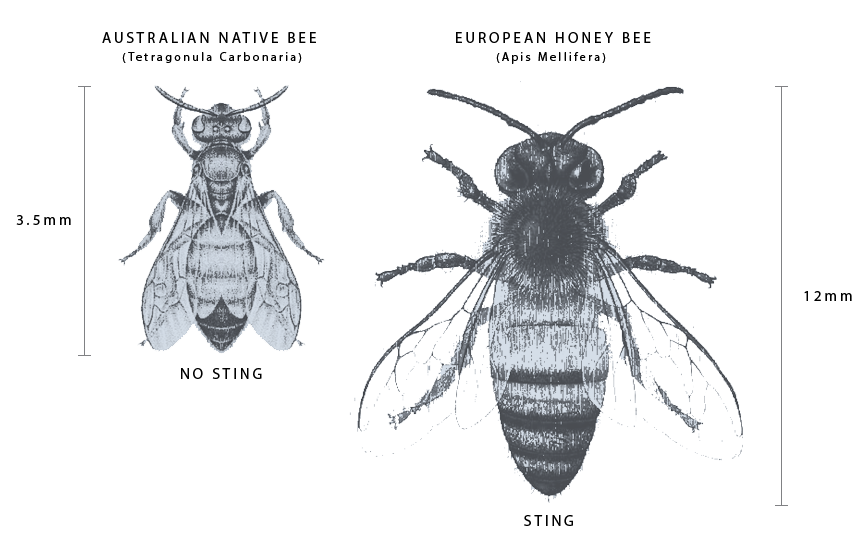Native Bees Australia
Native bees are amazing!

WHAT’S THE BUZZ?
Why are people suddenly so excited about native bees?
And why in particular, Tetragonula Carbonaria?
Humans have realised that bees are facing extinction in many parts of the world.
We need bees as they are responsible for pollinating about 70% of the plant food varieties we eat and for about 30% of the food we put in our mouths.
The unique spiral hive of the Australian Native Stingless Tetragonula Carbonaria bee showing brood, queen cells, propolis, honey and pollen stores.
Structure of the social stingless bee hive. Of the 1,600 species of wild bees native to Australia, about 14 are stingless. The various stingless species look quite similar. What sets them apart most obviously is the structure of their nests. This nest is one of my Tetragonula Carbonaria hives. You can see the beautiful spiral structure, the large golden queen cells on the 2nd and 3rd outer circles of the spiral; and the propolis surrounding the brood. The honey is stored mainly in the bottom left corner of this hive. You can also see pots of pollen distributed throughout the propolis around the brood.
Stingless bees store their aromatic honey in clusters of small resin pots around outside of the nest. For honey production, the bees need to be kept in a box specially designed to make the honey stores accessible without damaging the rest of the nest structure.
Some recent box designs for honey production provide a separate compartment for the honey stores so the honey pots can be removed without spilling honey into other areas of the nest. This special compartment is called a “honey super.” In optimum conditions, a hive of Australian stingless bees produces approximately 1 kg of beautiful native bee honey per year.
Stingless bee honey has a distinctive tangy taste. The distinctive flavour comes from plant resins which the bees use to build their hives and honey storage pots. The taste varies at different times of year depending on the flowers and trees visited. At our farm, the bees forage substantially on Macadamia flowers and the flavour of the honey reflects that, as well as the native bush trees around the farm and herbs in the garden.
How the Australian Native Bee Shapes Up
Stingless Bees are mainly found in the Northern and Eastern areas of Australia.

Why Tetragonula Carbonaria Australian native bees?
Stingless
Size is Everything
Fuss Free
Location
Weather Proof
They are reasonably tolerant to changes in the weather within the temperature range of 18-40 degrees Celsius.
Resistant
Native Bees – Australia

Native Bees on Flowers carrying pollen
Reach Us
Address
149 Cambridge Park Lane
South Arm NSW 2460
Phone
+61 404 987 130






